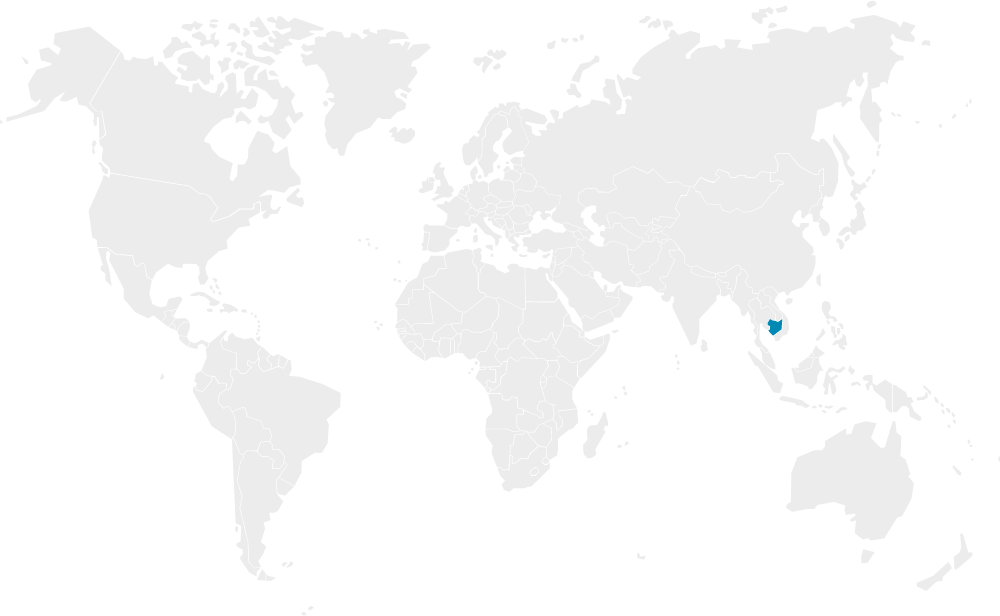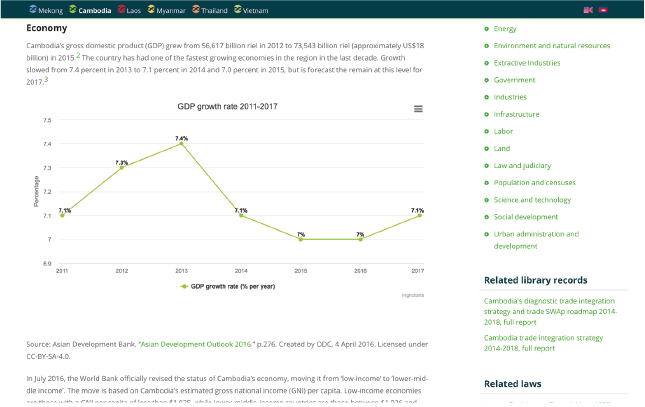Open Data for Developing Economies Case Studies
Open Development Cambodia
Opening Information on Development Efforts
by Michael P. Canares, Andrew Young and Stefaan Verhulst
Reference
1 . Project conducted in collaboration with the Web Foundation, United States Agency for International Development (USAID), and the Mobile Solutions, Technical Assistance and Research (mSTAR) program at FHI 360.
2 Special thanks to Akash Kapur who provided crucial editorial support for this case study, and to the peer reviewers who provided input on a pre-published draft.
3 . Erin Handley and Bun Sengkong, “Civil Society, Opposition Criticise Budget’s Opacity,” Phnom Penh Post, November 4, 2016, http://www.phnompenhpost.com/national/civil-society-opposition-criticise-budgets-opacity.
4 . Open Knowledge, “Global Open Data Index: Cambodia,” http://index.okfn.org/place/cambodia/ .
5 Kyle James, “Cambodia sets pace with open data,” DW Akademie, December 20, 2013, http://onmedia.dw-akademie.com/english/?p=16857.
6 . Interview with Thy Try, Executive Director, Open Development Cambodia, and Penhleak Chan, Regional Network and Partnership Support Manager of EWMI, November 17, 2016.
7 SPIDER, “Open Development Cambodia: Promoting transparency through open data,” http://spidercenter.org/2.31936/project-overview/open-development-cambodia-promoting-transparency-through-open-data-1.149787.
8 . Interview with Thy Try, Executive Editor, Open Development Cambodia, and Penhleak Chan, Regional Network and Partnership Support Manager of EWMI, November 17, 2016.
9 . Interview with Thy Try, Executive Director, Open Development Cambodia, and Penhleak Chan, Regional Network and Partnership Support Manager of EWMI, November 17, 2016.
10 . Interview with Thy Try, Executive Director, Open Development Cambodia, November 24, 2016.
11 . Naly Pilorge, Virak Yeng, Vuthy Eang, “Think of Cambodia before you add sugar to your coffee,” The Guardian, July 12, 2013, https://www.theguardian.com/commentisfree/2013/jul/12/cambodia-sugar-eu-policy.
12 . Faine Greenwood, “As the Internet Raises Civic Voices in Cambodia, a Struggle Brews Over Net Control,” Tech President, March 27, 2013, http://techpresident.com/news/wegov/23659/internet-civic-voices-cambodia-struggle-net-control/
13 . Julia Wallace, “Development and Its Discontent,” The New York Times, April 12, 2013, https://latitude.blogs.nytimes.com/2013/04/12/development-and-its-discontent/?_r=0.
14 . Nicolas Mansfield, “Open Development Cambodia: How open data can promote land use transparency,” Devex, September 20, 2013, https://www.devex.com/news/open-development-cambodia-how-open-data-can-promote-land-use-transparency-81848
15 . “Columbia SIPA,” Open Development Cambodia, https://opendevelopmentcambodia.net/about/partnerships/columbia-sipa/
16 . “Save Cambodia’s Wildlife,” Open Development Cambodia, https://opendevelopmentcambodia.net/about/partnerships/save-cambodias-wildlife-scw/
17 . “DW Global Media Forum: Open Data in Cambodia,” DW Akademie, July 3, 2014, http://www.dw.com/en/dw-global-media-forum-open-data-in-cambodia/a-17755220.
18 . Interview with Thy Try, Executive Director, Open Development Cambodia, and Penhleak Chan, Regional Network and Partnership Support Manager of EWMI, November 17, 2016.
19 . Interview with Thy Try, Executive Director, Open Development Cambodia, and Penhleak Chan, Regional Network and Partnership Support Manager of EWMI, November 17, 2016.




